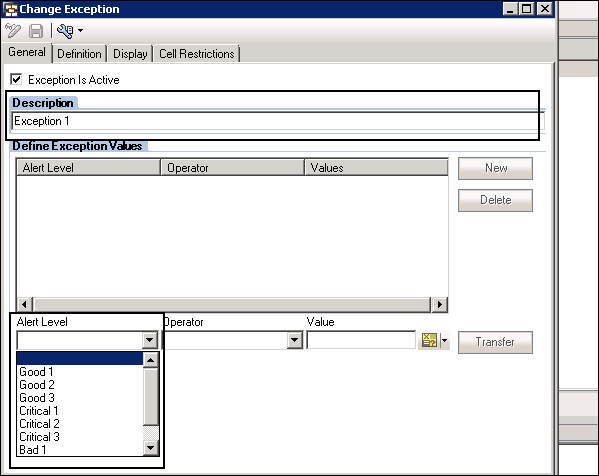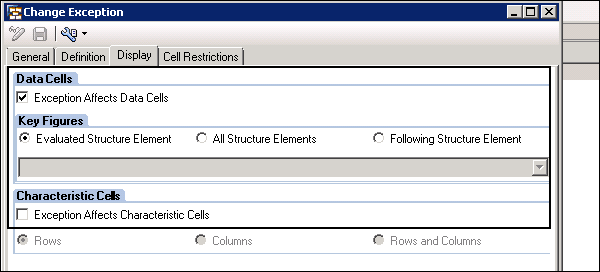
- SAP BEx Tutorial
- SAP BEx - Home
- SAP BEx - Overview
- SAP BEx - Architecture
- SAP BEx - Query Designer
- SAP BEx - Query Designer Features
- SAP BEx - Web
- SAP BEx - Web Integration
- SAP BEx - Analyzer
- SAP BEx - Analysis Functions
- SAP BEx - Objects
- SAP BEx - Accessibility Mode
- SAP BEx - Information Broadcasting
- SAP BEx - Integration With BO
- SAP BEx Useful Resources
- SAP BEx - Quick Guide
- SAP BEx - Useful Resources
- SAP BEx - Discussion
SAP BEx - Analysis Functions
In this chapter, we will discuss in detail about the different Analysis Functions in BEx. We will also learn how to perform local calculations, adding conditions to improve data analysis and Exception Reporting.
Business Explorer – Performing Local Calculations
Using local calculations, you can perform calculations on the numbers based in the current report view. For example, to perform a sum of the top 10 products in the list.
There are a few functions that can be used to perform Local Calculations −
Calculate Result As
You can use this function to recalculate the result rows in the BEx Web Application as per certain criteria. You override the standard calculation using local calculations. It includes only those numbers in the calculation appear in the current application view.
This function can be used in the following areas −
- BEx Query Designer
- BEx Web Applications
- BEx Analyzer
Calculate Single Values As
This function is used to recalculate single values in web applications as per certain selection criteria.
This function can be used in the following areas −
- BEx Query Designer
- BEx Web Applications
- BEx Analyzer
Business Explorer – Conditions
You can also add conditions to improve the data analysis and then the data is fetched only as per that condition. When a condition is applied, it just removes the unrequired rows from the returned data.
Note − This condition doesn’t alter the values displayed or the key figures in the result rows.
You can also define multiple conditions in a query, which can be separated using a logical AND.
The function to define a condition is available in the following Business Explorer tools −
- BEx Query Designer
- BEx Web Analyzer
- BEx Analyzer
- In Web Applications
The following type of conditions exist −
- Ranked List Condition
- Threshold Value Condition
- Mixed Condition
There are different operators that can be used for Threshold Value Condition −
- = Equal To
- Not Equal To
- Greater Than
- >= Greater Than or Equal To
- < Less Than
- <= Less Than or Equal To
- [] Between
- ][ Not Between
There are different operators that can be used for Ranked List Condition −
- Top N
- Top %
- Top Total
- Bottom N
- Bottom %
- Bottom Total
Business Explorer – Exception Reporting
You can also highlight the objects in the Business Explorer that are important as compared to other objects. This allows you to find any deviation from the predefined or expected results. Using Exception, you can highlight the objects which are critical to a query.
An Exception can be defined for the following areas of Business Explorer −
- BEx Query Designer
- BEx Web Analyzer
- Web Applications
Defining Exceptions in a Query Designer
When you select a query in the Query Designer to add an exception, you need to navigate to View → Exceptions.

In the Exception section area, select New Exception from the context menu as shown in the following screenshot.

Select the Exception and Right Click → Edit. This will open the Change Exception window.
The next step is to define the Exception in the change exception window. There are different alert levels that you can select.

You can select from the following Operator types −
- = Equal To
- Not Equal To
- Greater Than
- >= Greater Than or Equal To
- < Less Than
- <= Less Than or Equal To
- [] Between
- ][ Not Between
Display Tab
You can define if an exception affects the data cells or the characteristic cells. As per the defined setting, highlighting for the exception is displayed on the numbers for the selected key figure or the text for the most detailed characteristic value.

To Continue Learning Please Login